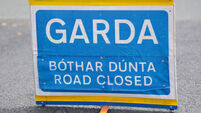Students, teachers, and parents to be interviewed on new Leaving Cert grade system

The Leaving Certificate is no longer marked using 14 different grades, with most grades separated by just 5%, like it was from the early 1990s.
The results issued last month to more than 57,000 school leavers were the first in which a new set of eight grades was awarded, with 10% between all but one of each of the new grades and those above or below them. They run from a top mark of H1 or O1 for 90% to 100% at higher or ordinary level, down to H8 and O8 for 30% or less.
The National Council for Curriculum and Assessment (NCCA) now wants to see if the changes it designed will have the desired impacts, including a move away from rote learning and exam-focused teaching.
This approach has previously been found to kick in as early as second year to prepare students for the Junior Certificate.
However, reforms under way to the three-year junior cycle are intended to address those issues.
While it may be too early to get a full sense of any impact of the Leaving Certificate grade changes, the NCCA is having a study undertaken at around a dozen second-level schools to help design future, more detailed research. It should begin before Christmas and continue through the rest of the school year.
The study will look at any changes to the school experience and environment arising from the changes and a corresponding new Central Applications Office (CAO) points scale, also used for the first time this year.
The researchers intend to contact teachers, students, and guidance counsellors and find out if there is evidence of any changes. The areas of focus will include teaching methods, exam preparation, and students’ decisions, such as whether to take subjects at higher or ordinary level in the Leaving Certificate.
One effect almost certainly attributable to the new CAO points scale this year was a rise in numbers choosing the higher level exams across most subjects. This was due to the reduced risk of performing badly as a student who would previously have got no CAO points for less than 40% now gets 37 points for a H7 (30% to 40%) grade.
The study will also look at whether mock exams and student approaches to exam preparation have been affected by the new grades and CAO points.
Any changes to how students and teachers perceive the ‘sixth year’ experience will also be probed, but parents are also to be engaged in the research exercise, with particular emphasis on those who may have older children who did the Leaving Certificate before this year.
The latest State Examinations Commission data on this week’s Junior Certificate results show girls still perform better than boys. Female students were more likely than males to do higher level exams in all main subjects of English, Irish, Maths, geography, science, history and French, and to get an honours grade (A, B or C, or 55% and higher) at that level.
This includes English, where A, B and C grades are replaced by Distinction, Higher Merit and Merit. More than 25,400 girls did the subject at higher level and 88% of them got a Merit or higher compared to 75% of the 22,829 boys who did the same exams.













